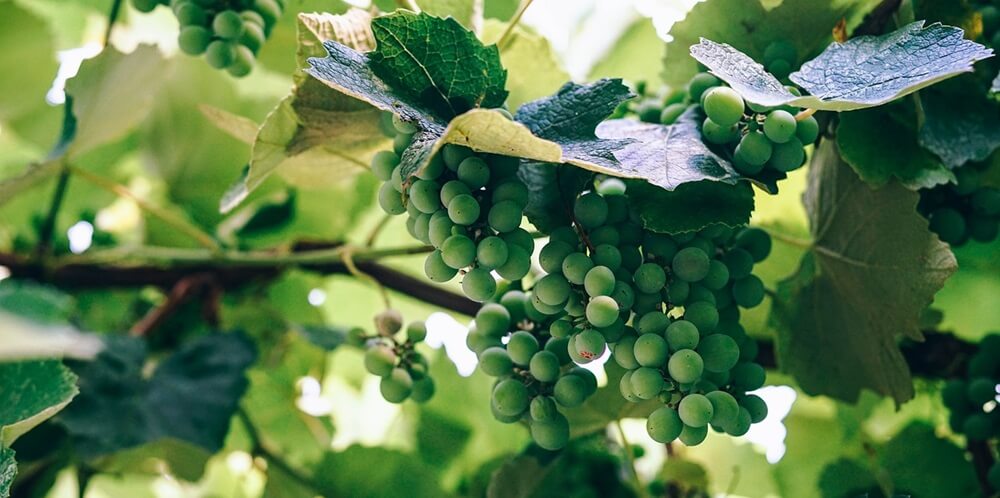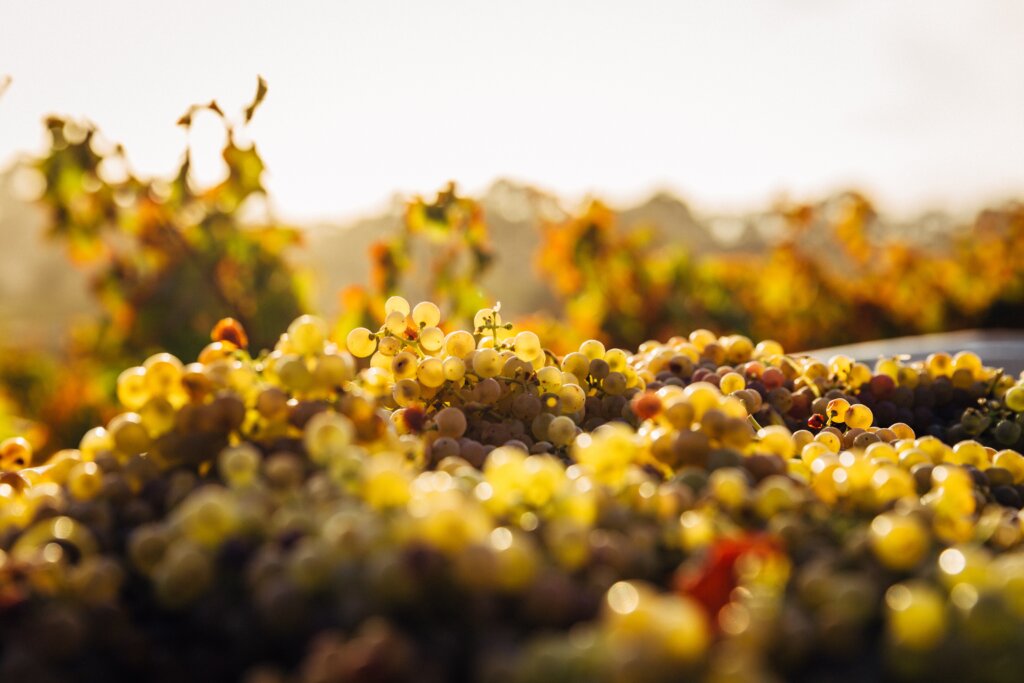Is Pinot Grigio Sweet or Dry? Everything You Need to Know

As with all things wine, there is no simple answer.
As one of the most popular wines produced and consumed globally, Pinot Grigio comes in many different styles. However, most bottles of Pinot Grigio are made in a light, dry style.
Pinot Grigio vs Pinot Gris
Did you know that Pinot Grigio and Pinot Gris are the same grape operating under different names?
Typically, wines labeled Pinot Gris are grown in France (Alsace) and Pinot Grigio in Italy. That said, many different countries grow these grapes and produce wines under both names.
The two names also tend to indicate two different styles of wine (more on this in a bit).
Where does Pinot Grigio typically fall on a scale of dry to sweet?
The amount of residual sugar (sugar leftover after the fermentation process) determines the sweetness in wine.
When a wine is referred to as ‘dry,’ it is referencing the lack of residual sugar (not to be confused with the drying sensation of tannins, which is something else entirely). Residual sugar can be measured as a percentage or in grams per liter.

Wines that come in a variety of sweetness levels and styles, such as Riesling, often include a sweetness scale on the label to help the buyer know what is in the bottle.
Pinot Grigio may sometimes include a few grams of residual sugar to help balance the bright acidity. However, this level of residual is generally not enough for it to be considered sweet.
What might impact how dry or sweet a Pinot Grigio is?
As mentioned, the sweetness of a wine is determined by residual sugar after fermentation.
As a quick refresher – grapes (and all fruit, for that matter) accumulate sugars as they ripen. So, the riper the grapes, the sweeter they are.
Fermentation is the process of yeast converting that sugar into alcohol. If not all of the sugar becomes alcohol, there is residual sugar left in the wine. This can result in a lot or a little residual sugar, depending on the style being produced.
The timing of the harvest can impact how much sugar there is at the beginning of the process, and therefore how sweet the resulting wine is.

Pinot Gris is typically harvested later in the season. This results in grapes that are more ripe, creating a full bodied, rich wine, often with noticeable sweetness and higher alcohol.
Pinot Grigio, on the other hand, is harvested early to retain acidity and made in a light, fresh, dry style with moderate alcohol.
While it is not always the case, bottles labeled Gris versus Grigio can be an indication of style.
Relative to similar wines, is Pinot Grigio sweeter or dryer?
Which is sweeter Chardonnay or Pinot Grigio?
Almost all Chardonnay is made in a dry style, both oaked and unoaked.
However, many Chardonnays are produced in warm regions (California, Australia) where the grapes get very ripe and take on a tropical character. So, the perception can sometimes be that of sweetness.
A lean, unoaked Chardonnay from a cool climate (such as Chablis) will be comparable to a lot of Pinot Grigios.
Which is sweeter Chardonnay or Sauvignon Blanc?
Some of the most well known Sauvignon Blancs, such as those from Marlborough, New Zealand, and Sancerre, France, are dry with zippy acidity…similar to many Pinot Grigios.

However, one of the most famous sweet wines of the world – Sauternes, from Bordeaux, France – has Sauvignon Blanc in the blend, along with Semillon and Muscadelle.
So, Sauvignon Blanc has a wider sweetness range than many realize.
Would you consider Pinot Grigio fruity?
Sometimes, wines that are very fruity can be perceived as sweet. This is especially true if the nature of the fruit is juicy and ripe.
Pinot Grigio typically features more citrus notes, such as lemon, green apple, and pear. So, while there are definitely distinct fruit notes, they are subtle.
Unlike some other white wines, such as Chardonnay, Pinot Grigio is typically unoaked, which allows these fruit notes to shine through more clearly.
Styles of Pinot Grigio do vary somewhat within Italy, as well.
Friuli in northern Italy is known for producing orange wines from Pinot Grigio. Imagine a white wine made in the style of a red, where extended skin contact imparts some color and tannin into the wine. These wines are often peachy in character with a savory finish. Most Italian Pinot Grigio hails from the Veneto region, where they focus on unoaked, easy drinking wines.
Pinot Gris, on the other hand, usually displays more concentrated fruit notes because it is harvested later and the grapes are riper. Expect juicy peach aromas and flavors from this style, often accompanied by a touch of honey character.
What are some common opinions in the wine world about Pinot Grigio?
Pinot Grigio is sometimes maligned by wine professionals and connoisseurs.
It rose to high popularity very, very quickly, causing a lot of over planting and some fairly poor, carbon copy examples to flood the marketplace.
However, production has now leveled out and Pinot Grigio is made in many different styles throughout Italy and around the world, adding increased interest to the variety.
It can be especially fun to seek out some of the different, out of the box styles being produced, in order to truly understand how versatile this grape can be.
Check out this video for another wine professional’s perspective on Pinot Grigio…
If you enjoy Pinot Grigio, what other wines should you try?
Seek out additional Italian white wine varieties!
Many are made in a similar fresh, unoaked style, but bring the varietal character of the grape into the mix.

Soave, produced from the Garganega grape, and Gavi, produced from Cortese, are both Northern Italian options worth trying.
Prosecco, bubbly wine made from the Glera grape, is also from the Veneto region (same as many Pinot Grigios), so it might be fun to do a side by side comparison of different wines from the same geographical area of Italy.
For non-Italian varieties, dry Rieslings, Albarinos from Spain, and Gruner Veltliner from Austria may entice the palate. Also, be sure to try some Alsatian Pinot Gris to compare the styles.
Cheers!

Allison Sheardy came to wine as a second career in 2016 and has truly found her calling. She has created a niche for herself working in unique wine regions around the United States (Texas Hill Country, historic Livermore, CA, & Minnesota), where she specializes in hospitality for boutique, family-owned wineries. Allison is equally passionate about wine education. As such, she has earned her WSET Diploma in Wines and completed the French Wine Scholar program. Allison is currently pursuing her Master of Wine and teaches WSET levels 1-3.
